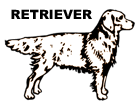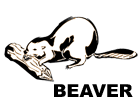NOTE: If you’d like to learn more about your unique temperament, leadership style, and the BEST four-phase framework for new and creative leaders, visit my new website, Creatives Lead.
In this third and final installment let’s look at some of the general relationship strategies that we can use when working together with other “animal” temperaments? Listed below are some working ideas to help you better understand your team mates and/or colleagues and become ‘lord of the jungle’:
Wants You to Be: efficient and to the point
Provide Them With: options, information on what it does and by when, freedom to act, immediate action
General Strategies: be efficient and competent, support their goals and objectives, if you disagree – argue facts and not personal feelings, be precise, time disciplined, well organized, focus on the results or bottom-line, do not waste their time, let them make the decision
Wants You to Be: stimulating and interesting
Provide Them With: quality, information on how it will enhance their status, increased talent, originality, uniqueness
General Strategies: be interested in them, support their dreams, feelings and opinions, be sociable, do not hurry the discussion – give them a chance to verbalize, try not to argue, don’t deal with details – put it all in writing, do not be shy, agree on the specifics of any arrangement
Wants You to Be: cooperative and pleasant
Provide Them With: assurances, information on how it will affect their circumstances, popular ideas, risk sharing, reliability, assistance in presenting to others
General Strategies: be non-threatening and sincere, show personal interest and support their feelings, don’t push, move along in a slow manner, show that you are listening, be easy-going, assure them that you stand behind any decisions
Wants You to Be: accurate and precise
Provide Them With: evidence, information on how they can logically justify, systematic plans, progress reviews
General Strategies: be thorough and well planned, support their thoughtful approach, demonstrate through action rather than words, be exact, organized, and prepared, give them time to verify your words, don’t rush decision making, avoid gimmicks, provide evidence that what you say is true and accurate
I hope these last three articles have been helpful and have added additional “tools” to your management and personal communication “tool belt”. As always, the application of knowledge is often the hardest part. Take what you’ve learned and move out one step at a time. Even if you pick out just one strategy to work on over the next couple weeks, you’ll be pleasantly surprised at the results.
Related Links
– Understanding the Animal Temperaments
– Leadership Styles: Dictatorial, Authoritative, Consultative, Participative
– Leadership Styles: When To Use Them
– How Leadership Styles Affect Productivity
– You Might Be A Micromanager If…





I have not seen anything about this for many years it was good to find it agian. The context I first found it in was a marriage retreat, interesting hugh! Thanks
What does the D, I, S, C represent? I am assuming more common terms for leadership styles but cannot correlate…
Thanks.
Did you find the answer- What does the D, I, S, C represent?
The DISC assessments classify four aspects of behavior by testing a person’s preferences in word associations (compare with Myers-Briggs Type Indicator). DISC is an acronym for:
Dominance – relating to control, power and assertiveness
Influence – relating to social situations and communication
Steadiness (submission in Marston’s time) – relating to patience, persistence, and thoughtfulness
Conscientiousness (or caution, compliance in Marston’s time) – relating to structure and organization
Find the full write up here on Wikipedia:
http://en.wikipedia.org/wiki/DISC_assessment
Enjoy,
-eb
That�s nice to once and for all find a web site where the blogger really knows what he is talking about.
I am a prison officer,which means I work in a dictatorial authoritative environment.I am also a facilitator and would love to
deliver a workshop based on your research.What copyright issues are involved?
Rob, the original material was developed by Dr. Gary Smalley and Dr. John Trent (see the first post on this topic). Give them credit and you should be fine.
Let me know how it goes! -eb
I took the personality quiz at a teacher professional development workshop. It was so much fun! The leaders put us in groups and we discussed our teaching styles and even exchanged email addresses afterward. :) Would I be allowed to use this in my middle school classroom? Where could I get the actual paper pencil quiz like the one we took?
Hi Jenifer,
You’ll be glad to know, Gary Smalley has made the test available free for download from his website:
http://smalley.cc/marriage-assessments/free-personality-test
Enjoy,
-eb